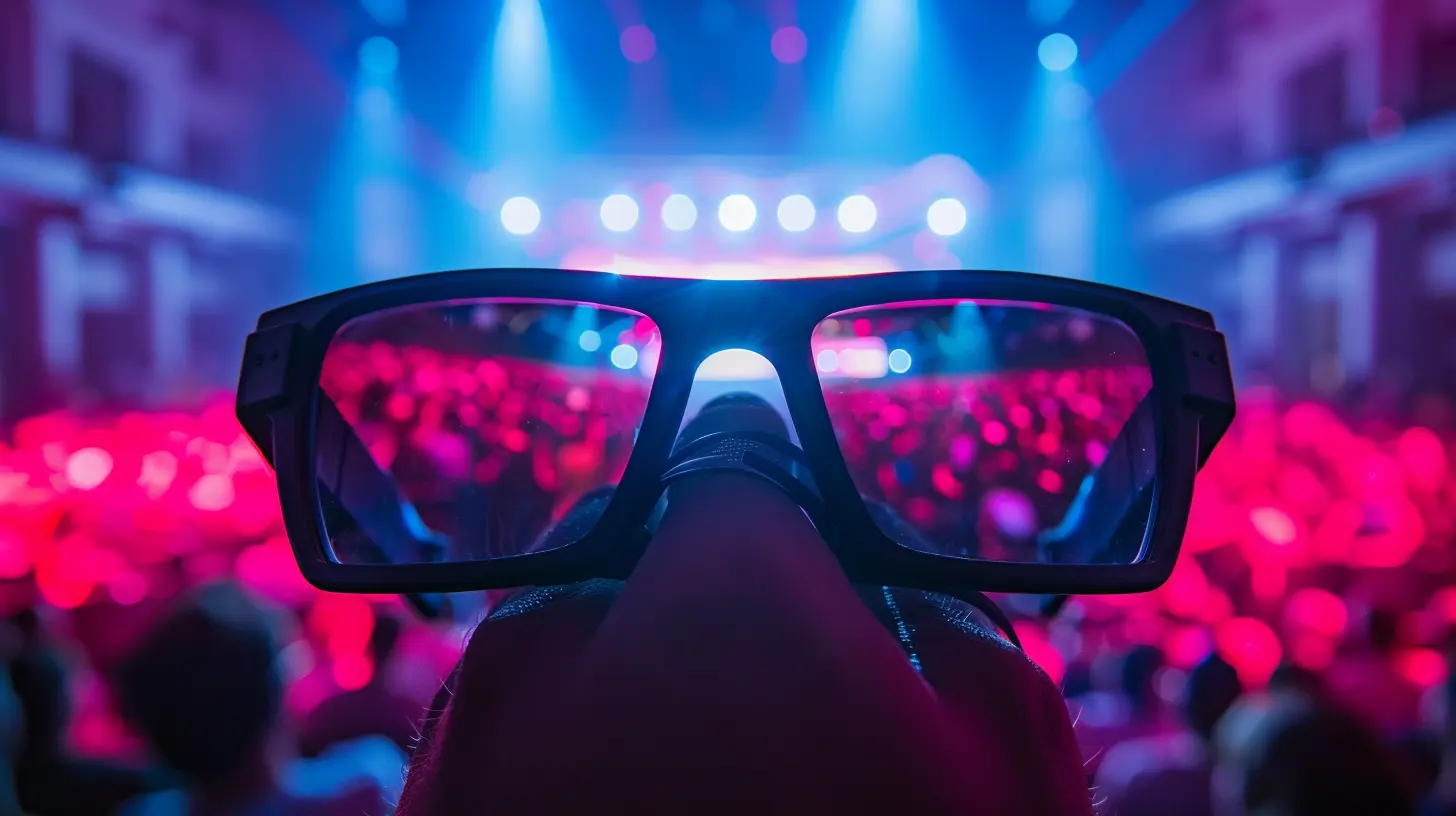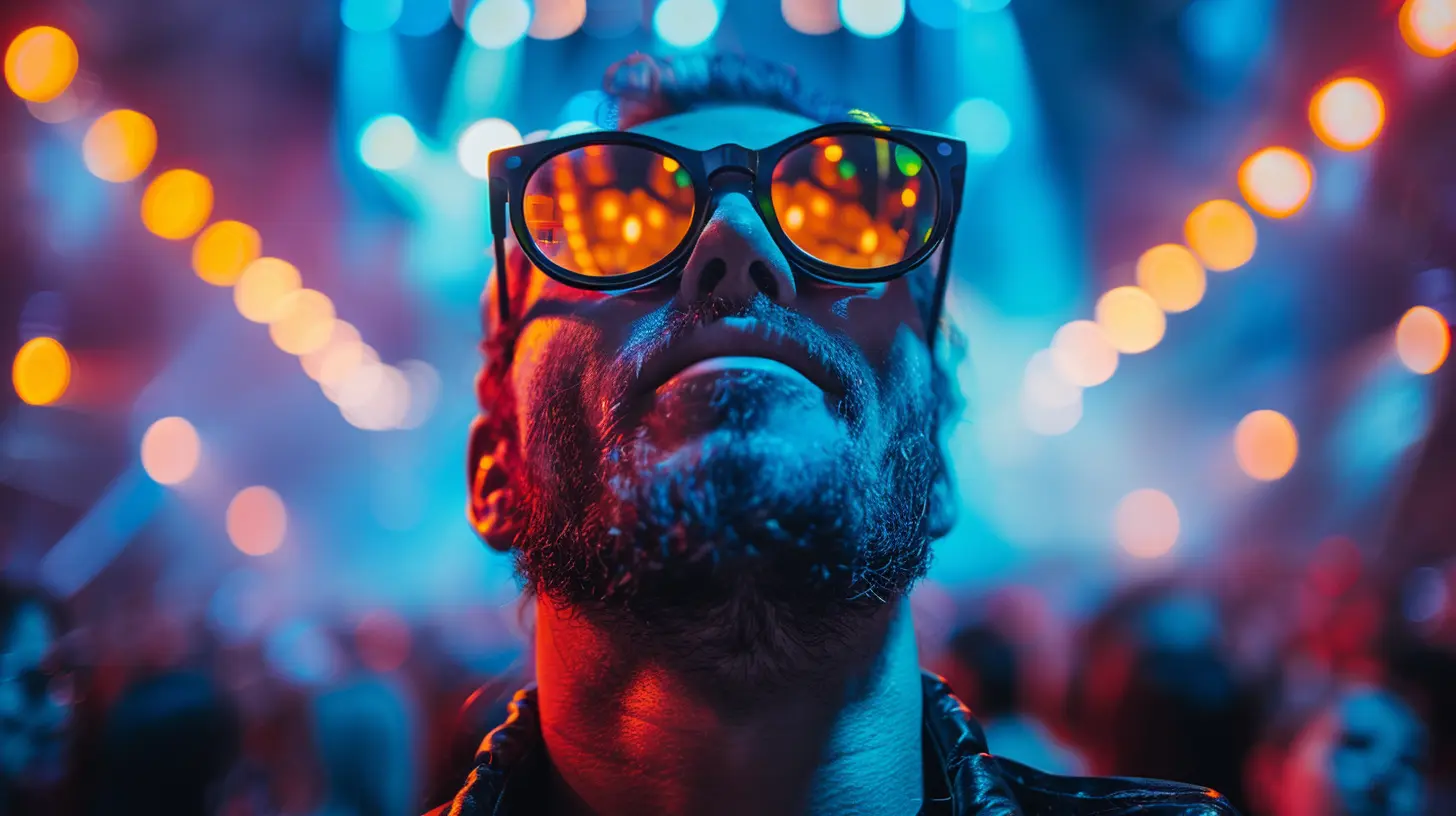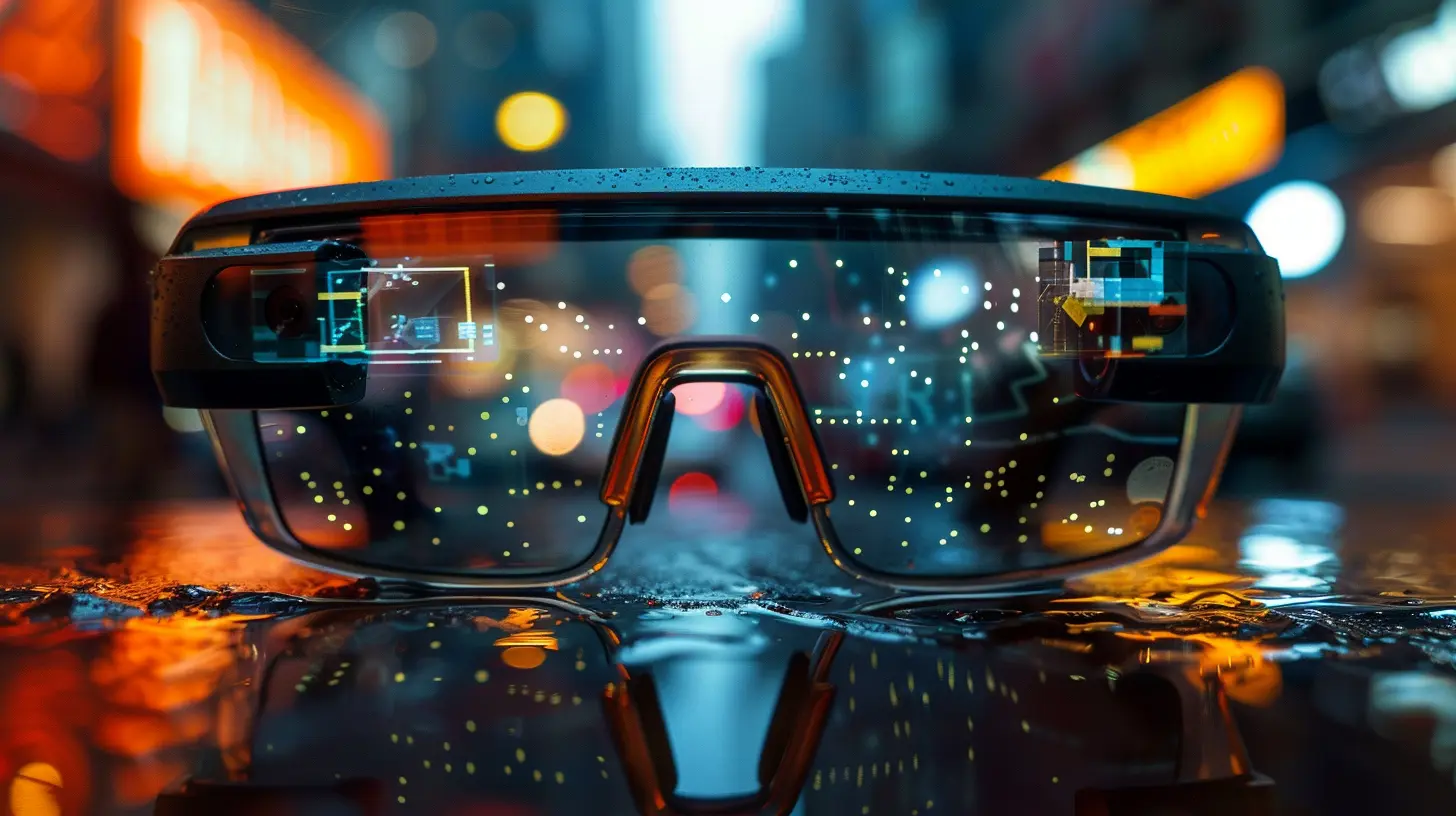How AR Glasses Are Enhancing Live Events and Concerts
16 June 2025
Let’s talk about something cool—augmented reality (AR) glasses. You’ve probably heard the buzz. You might even associate them with futuristic sci-fi films, but here’s the thing: AR glasses are very real, and they’re making a major splash in the live events and concert scene.
Imagine this: you’re at a concert, jamming to your favorite band, and as you look around, lyrics float in front of your eyes, exclusive backstage footage pops up, and you can even see digital fireworks synced to the beat. Sounds like magic, right? That’s the power of AR glasses.
In this article, we’ll dive deep into how AR glasses are enhancing live events and concerts. We’ll break it down in a way that’s easy to understand, engaging, and sprinkled with excitement. So, sit tight—we’re about to take a ride into the future of entertainment.
What Are AR Glasses, Anyway?
Before we get into the fun stuff, let’s make sure we’re all on the same page.AR glasses are wearable devices that overlay digital information—like images, animations, texts, or 3D models—onto the real world. Unlike virtual reality headsets that block out the physical world, AR glasses blend the virtual with the physical. Think of it like having a dynamic, context-aware screen floating in front of your face.
And no, they’re not bulky helmets from the early 2000s. Today’s AR glasses are sleek, stylish, and surprisingly lightweight—some even look like regular sunglasses.
The Live Event Experience: Now vs. AR-Powered
The Traditional Experience
We’ve all been there. You’re at a festival or a concert, and while the vibe's electric, you can’t help but feel that you’re missing out on something. Maybe the view isn’t great, or the sound is a little off. Maybe you’re trying to figure out where your friends are, or you’re lost in a sea of unfamiliar faces.You pull out your phone to capture the moment, and boom—your attention is split. You've left the real moment for a digital one.
Enter AR Glasses
Now picture this—AR glasses solve all of that. With just a glance, they enhance your surroundings without pulling you away from them.Front-row view? Doesn’t matter. AR overlays can bring close-up footage right to your eyes.
Can’t find your friend in the crowd? Some AR systems can highlight faces or guide you toward your group.
Want to know the next song in the lineup or buy a drink? A floating menu appears, and you interact with it without ever taking out your phone.
It doesn’t just change the experience. It supercharges it.
How AR Glasses Are Revolutionizing Live Concerts
1. Real-Time Visual Enhancements
One of the coolest things AR glasses bring to the table is real-time visual effects. Imagine laser lights, stage animations, and pyrotechnics that aren’t limited to the stage. With AR, they’re everywhere.You could see 3D animations floating above the artist, digital flames bursting to the rhythm of the drums, or even avatars joining the performance on stage. It’s like a personal firework show tailored to you and your point of view.
And the best part? It’s subtle enough to blend with reality. You're still immersed in the live concert, but your senses are treated to a feast of interactive visuals.
2. Real-Time Lyrics and Subtitles
Ever found yourself singing the wrong lyrics? (Guilty!) With AR glasses, the lyrics appear in real-time, right within your field of vision. Think karaoke—but way cooler.For international attendees, subtitles in various languages can make concerts universally accessible, breaking the language barrier without missing a beat.
3. Multi-Cam Streaming Right From Your Seat
AR glasses can tap into a concert's multiple camera feeds. Want a behind-the-scenes camera? Tap it on your glasses. Want to see what the drummer sees? Easy.It’s like switching angles during a sports match on your TV—but while standing in a crowd of thousands at a live concert. Every seat becomes the best seat in the house.
4. Interactive Setlists and Voting
Some concerts are testing interactive features where fans help shape the setlist in real time.With AR glasses, you could see song options pop up, vote with a simple gesture or glance, and watch the band respond mid-show. That’s not just attending a concert—that’s being part of it.
5. Merch Shopping Without the Lines
Long merch lines? Ugh, no thanks.AR glasses allow you to view virtual merch booths, try on band tees digitally, and make your purchase on the spot. The merch gets delivered to your seat or home. It’s like shopping in a video game but in real life.
How AR Glasses Are Transforming Festivals and Large-Scale Events
Crowd Navigation and Friend Finder
Navigating a massive festival can feel like being lost in a labyrinth. AR glasses simplify it.With built-in GPS overlays and location markers, you can find stages, food vendors, restrooms, and even your friends. It’s like having Google Maps—right in front of your eyes.
Personalized Schedules and Reminders
Festivals have packed schedules, and it’s easy to miss a favorite act. AR glasses can set visual reminders and notify you when a performance you love is about to start—flashing subtle alerts in your vision.You won’t miss a thing again.
Immersive Digital Art Installations
Many large festivals already feature incredible digital art, but AR glasses can take it a step further. Interactive 3D art, digital scavenger hunts, or even hidden Easter eggs can be embedded in the environment, visible only through AR.It’s like unlocking a secret layer to the festival that only AR users can see.
The Fan Engagement Factor: Next-Level Connection
Meet-and-Greet Overlays and Virtual Messages
Not everyone gets backstage passes, but what if the band could send a personalized message that appears as a 3D hologram in front of you?Fans can receive shout-outs, virtual meet-and-greets, and interactive moments that feel deeply personal thanks to AR. This could totally redefine what it means to connect with your favorite artists.
Social Sharing Without Phones
Let’s be honest—pulling out your phone at a concert is a bit of a buzzkill.AR glasses allow you to take photos and record snippets with a quick gesture or voice command. They can even share it directly to social platforms without you missing a beat of the live performance.
The Tech Behind the Magic
Let’s geek out for a second and peek under the hood.To make all this magic happen, AR glasses rely on:
- Computer vision and spatial mapping: So they understand their surroundings.
- Edge computing and 5G: So responses are lightning-fast with minimal lag.
- Sensors and accelerometers: To adapt to your head movements and gestures.
- Cloud connectivity and AI: To personalize content based on context and preferences.
It’s a perfect blend of hardware and software working in harmony—all to give you an unforgettable experience.
Are AR Glasses the Future of Live Entertainment?
Short answer? Heck yes.Live events are all about energy, connection, and moments you never forget. AR glasses don’t replace that—they enhance it. They strip away distractions, add interactivity, and bring fans and performers closer than ever before.
While we’re still in the early stages (with costs and availability still a bit of a hurdle), the pace of innovation is fast. Some artists and event organizers are already experimenting with AR-enhanced tour packages—and fans are eating it up.
Imagine in a few years, going to a concert without AR glasses will feel like listening to music without headphones. Possible, sure—but why would you?
Challenges and Considerations
Of course, no tech is perfect (yet).- Battery Life: High-performance AR glasses tend to eat up energy fast. Thankfully, new improvements are being made in energy-efficient AR displays.
- Privacy Concerns: Just like with smartphones, always-on cameras and location tracking can be a concern. Responsible data practices and clear opt-in features are essential.
- Cost: AR glasses aren’t dirt cheap right now. But as adoption increases, prices will drop—just like smartphones did.
But these are all things that the industry is working through, and let’s be real—every groundbreaking tech had its growing pains.
The Takeaway
AR glasses are flipping the script on what it means to attend a concert or live event. They’re turning passive spectators into active participants, adding layers of immersion, personalization, and magic that weren’t possible before.Whether you're a die-hard music fan, a casual festival-goer, or someone who just loves cool tech—this innovation is worth keeping an eye on. And who knows? The next time you buy a concert ticket, you might just be adding “AR access” to your order.
Get ready to see live events like never before—literally.
all images in this post were generated using AI tools
Category:
Ar GlassesAuthor:

Gabriel Sullivan
Discussion
rate this article
2 comments
Aurelia McMillan
AR glasses revolutionize live events by blending digital content with reality, enhancing audience engagement through immersive experiences, interactive displays, and personalized information, ultimately transforming entertainment dynamics.
June 22, 2025 at 4:02 AM

Gabriel Sullivan
Thank you! AR glasses indeed offer an exciting way to elevate live events, making them more immersive and engaging for audiences.
Wolf Bennett
AR glasses offer immersive experiences at live events, blending technology with entertainment seamlessly.
June 16, 2025 at 3:06 AM

Gabriel Sullivan
Thank you! AR glasses truly elevate live experiences by merging digital content with the real world, creating unforgettable moments for attendees.


